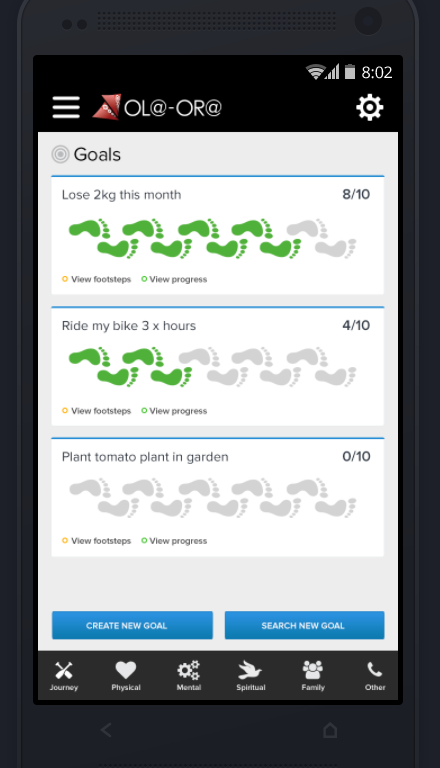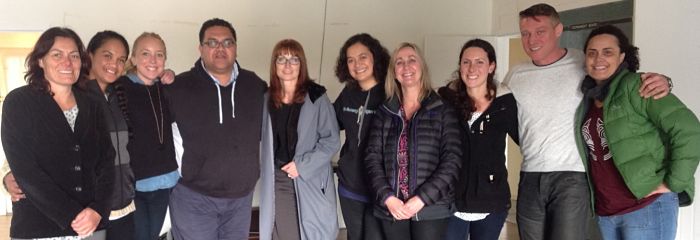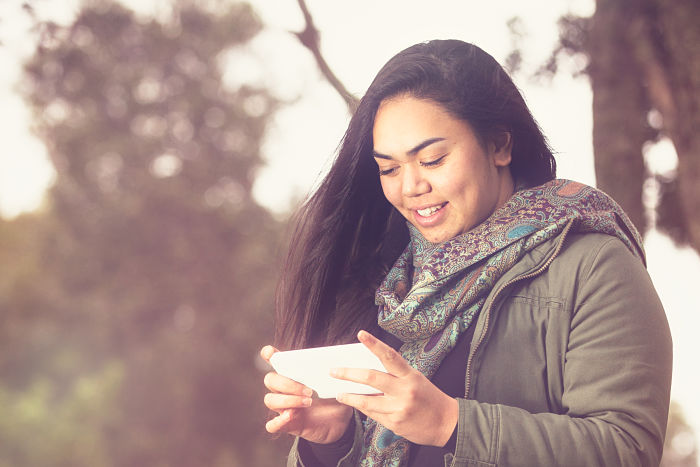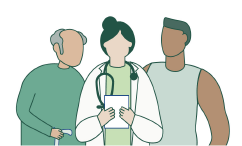A journey towards health, in the palm of your hand
4 September 2017
Imagine going to your doctor and coming away not with a prescription for pharmaceuticals – but for an app to download to your phone. This is a scenario that’s in the not-too-distant future, in particular for our Māori and Pacific communities, if a new project that’s part of the Healthier Lives He Oranga Hauora National Science Challenge achieves its objective.
The OL@-OR@ (“Ola Ora”) project is designing a mobile health (mHealth) tool in partnership with Māori and Pasifika Communities to help Kiwis become healthier and reduce their risk of heart disease, obesity and diabetes.
The tool is in the form of a smartphone app and supporting website, in two versions, tailored for each community. It helps people set goals to make lifestyle changes, but with a twist.
A whānau approach
Co-principal investigator, Auckland University’s Professor Cliona Ni Mhurchu explains: “What’s different about this tool is that it allows you to not only set individual goals, but also set goals as a community or whānau. So for example rather than one person having a goal of 10,000 steps a day, you might be a family of five and have a goal of 50,000 steps a day collectively”.
Users can invite family members, whānau and friends to join them in achieving their goals. Larger goals sit alongside smaller “footsteps”; small achievable tasks aimed at getting users to their ultimate goals.
Motivation for change
Once goals are set, the app helps users track their progress, sends motivational message notifications and offers links to a wide range of resources for help. This includes label-reading apps, recipes, fitness trackers and more.
It’s a tool with huge potential. Past research has found that simply by tracking our health – using a fitness tracker, for example – we’re more likely to achieve health goals such as getting fitter or losing weight.
“There’s really good behavioural research to show that writing down or tracking health goals helps motivate people and encourages behaviour change, and that can lead to better results”, says Professor Ni Mhurchu.
Community co-design
The tool has been developed using an innovative ‘co-design’ approach, meaning the communities it’s designed to serve have been involved right through the design process. Alongside Professor Ni Mhurchu, the project is being led by co-principal investigators, University of Otago’s Dr Lisa Te Morenga and Massey University’s Dr Riz Firestone, who bring valuable perspective from the Māori and Pasifika communities, respectively, to the research.
These communities have been integral to the design process. Over the space of a year, the project team held a series of focus groups, hui and fono to design the direction and content of the app and website, during which the communities came up with detailed ideas about what the app should do, how it should work and what it should look like. Community members were then involved in testing the prototype designs and providing feedback.
The thinking is that by getting community members involved at every step of the process, they end up with something that is a truly useful tool, customised for their respective communities. This also means people are much more likely to use it. “This approach really appeals to these communities because it’s empowering”, says Professor Ni Mhurchu. “Rather than traditionally being ‘researched on’, they’re equal partners in the design of the research”.
That process has led to some features researchers wouldn’t have come up with on their own.
More than physical health
A unique aspect of this tool is that the app tracks not just physical health, but includes elements of mental, spiritual and whānau or family wellbeing. “The feedback from the communities was clear that these are important aspects of health for them”, says Professor Ni Mhurchu. “It was also important to acknowledge, particularly with Māori communities, the links with ancestry and tradition, so many of the messages have that context”.
Project manager Jacqui Grey says the app includes lots of learning for Māori.
For example the Maori version of the app includes a ‘Kai’ section, with a sub section on ‘Kai ā ngā atua’ (food of the gods). Clicking on this reveals stories of the atua, with information around food broken down under each god. Rongomataāne (atua of cultivated food) has information on building a maara kai (vegetable garden), seasonal food and affordable produce. Tangaroa (atua of the sea) has information on seafood and the tikanga around water safety and collecting seafood (kaimoana). And Haumietiketike (atua of wild foods) has the tikanga and information about local markets.
In the Māori app, users can choose from a waka or whare for their welcome page. The Pasifika version features a vaka.
 Behind the name
Behind the name
The name OL@-OR@ also comes from the communities who were instrumental in the project’s development.
“’Ora’ is the Māori word for wellbeing”, Jacqui Grey explains. And “Ola is a Pasifika word to describe all-round wellbeing. The @ symbol represents the use of technology. And the project logo with the sails represents the journey of the Maori and Pacific peoples to Aotearoa, as well as the journey of our project and the user’s journey towards wellbeing”.
The co-design approach has attracted global attention. Members of the research team have already been invited to present their work at local and international conferences.
The future for OL@-OR@
The next step for the OL@-OR@ project is a large scale trial to test the effectiveness of the tool, which is proposed to start early next year, involving almost 2,000 people. If the results are positive, the future could see a wider release, with the app being available for individuals and communities to download and use. The future could see many more Kiwi communities embarking on a journey towards health, one notification at a time.
More about OL@-OR@
- A Māori and Pasifika mHealth approach
- OL@-OR@ website
- A kaupapa Māori evaluation of a co-design mHealth Project with Māori communities, PhD project
- Co-design of MHealth Delivered Interventions: A Systematic Review to Assess Key Methods and Processes, Current Nutrition Report (2016) 5:160-167



